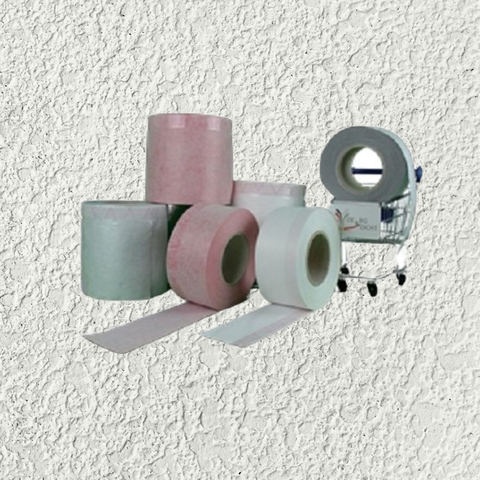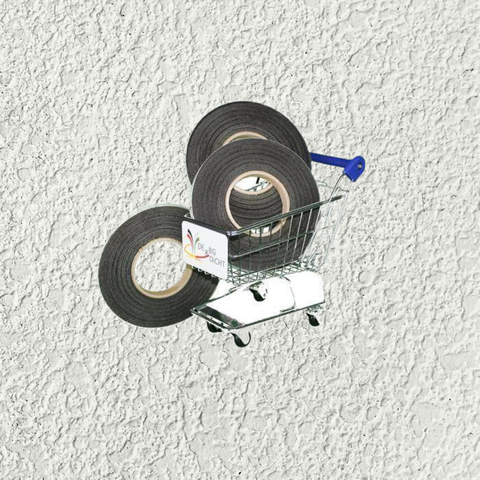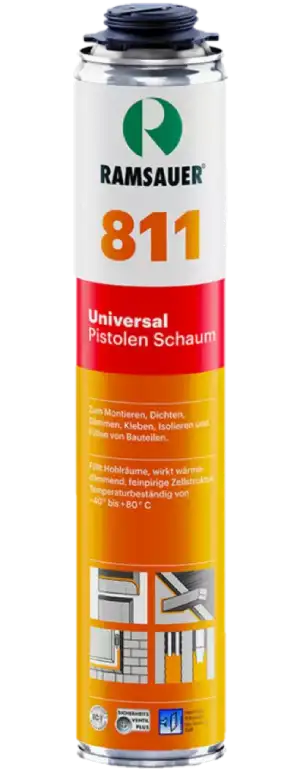Do you dream of becoming a real professional and completing your construction projects effortlessly? Then you should definitely learn how to use PU foam overhead like an expert! In this article, we will show you the steps and techniques to use this material effectively and achieve outstanding results.
PU foam is a versatile material used in the insulation, sealing and installation of many construction applications. If you want to know how to easily apply PU foam overhead, you've come to the right place. From correct preparation to precise application, we will give you all the important tips to make your work easier.
Whether you're an experienced craftsman or just want to improve your DIY skills, our expert tips will have you working like a pro in no time. Stop wasting time with failed attempts and learn the techniques to apply PU foam overhead safely and efficiently. Read on and become an expert in the use of this valuable material.
What is PU foam and why is it used?
PU foam, also known as polyurethane foam, is a synthetic material created by the chemical reaction of polyols and isocyanates. This versatile product is widely used in the construction and renovation industry, especially for insulation and waterproofing purposes. PU foam has the ability to expand on application and moulds itself around the surfaces it is applied to, resulting in an excellent seal.
A key reason for using PU foam is its excellent thermal insulation properties. It offers high insulation performance, which helps to reduce energy consumption in buildings. At the same time, PU foam can also serve as sound insulation and minimise unwanted noise. These properties make it ideal for use in walls, ceilings and floors where effective insulation is required.
In addition, PU foam is also water-repellent and can therefore be used in damp environments. This makes it particularly useful in bathrooms or kitchens where moisture can be a problem. Due to its many positive properties, PU foam has established itself as an indispensable material in the construction industry and is valued by professionals and DIY enthusiasts alike.
The advantages of using PU foam over the head
The use of PU foam overhead offers numerous advantages that are important for both professional craftsmen and DIY enthusiasts. Firstly, the application of PU foam in vertical or overhead positions allows for a seamless and even seal. This is particularly important in areas such as loft conversions or wall insulation, where it is crucial that there are no gaps or cracks through which air or water can penetrate.
Another advantage is the time saving that results from using PU foam. Compared to traditional materials, PU foam is quick and easy to apply. As soon as the foam is applied, it expands and fills the gaps without any additional processing. This can significantly reduce labour time and make the entire construction process more efficient.
PU foam is also lightweight and easy to transport, making it a practical choice for projects of any size. The ability to use PU foam overhead opens up new application possibilities and improves flexibility when designing rooms. Whether it's sealing windows and doors or installing insulating elements on ceilings, the advantages of PU foam are clear and convincing.
Safety precautions when working with PU foam overhead
When working with PU foam, it is extremely important to take the right safety precautions. PU foam contains chemical substances that can pose health risks if handled incorrectly. Firstly, you should always wear suitable personal protective equipment, including gloves, safety goggles and a respirator. This equipment will protect you from skin contact, eye irritation and inhalation of vapours that may be released during application.
It is also important to work in a well-ventilated area. If you apply PU foam overhead, vapours can easily escape into the room. Open windows or fans can help improve air circulation and reduce the risk of overexposure. When working indoors, it is important to ensure that the air supply is sufficient to avoid harmful concentrations of chemicals.
Finally, it is advisable to check the specific safety data sheets of the PU foam used beforehand. These sheets contain important information about the ingredients, potential hazards and recommended emergency procedures. By following these safety precautions, you can ensure that your work with PU foam remains safe and effective.
The right equipment for processing PU foam over the head
The right equipment is crucial for successfully applying PU foam overhead. Firstly, you need a high-quality PU foam can equipped with a special spray head. These cans are usually equipped with a foam valve, which enables precise application and makes it easier to control the amount of foam. Make sure that the can is shaken well before use to ensure an even mixture of the ingredients.
In addition to the foam cans, you should also consider a spray gun if you are working on larger areas. These guns enable targeted application and prevent the foam from expanding excessively, which is particularly important for vertical applications. They also offer the advantage that they are reusable and can therefore save costs in the long term.
Another useful accessory is a masking film or painter's tape to protect neighbouring surfaces from the foam. PU foam can be difficult to remove once it has dried, so it is advisable to mask off the areas that are not to be worked on. A shovel or spatula can also be helpful to remove excess foam or to make the application more even. With the right equipment, you are ideally equipped to apply PU foam overhead effectively and precisely.
Step-by-step guide to applying PU foam over the head
The application of PU foam over the head requires a precise approach to achieve the best result. Start by preparing the area you want to work on. Ensure that the surface is clean, dry and free from dust or dirt. This promotes the adhesion of the foam and ensures an effective seal. If necessary, use a cleaning agent to remove stubborn residue.
After the area is prepared, put on your personal protective equipment. Make sure you wear gloves, goggles and a respirator to protect yourself from the potentially harmful vapours. Before you begin application, shake the PU foam can thoroughly to mix the ingredients well. This is a crucial step to ensure that the foam is applied evenly and effectively.
Now you are ready to apply the PU foam. Hold the can upright and spray the foam in even movements onto the surface you want to work on. Make sure that you apply the foam in layers to avoid excessive expansion. Allow the foam to cure for a few minutes after application before continuing to work the surface or applying additional coats. Follow the specific drying times of the product used to achieve the best results.
Tips and tricks for a successful application of PU foam over the head
To optimise your overhead PU foam application, there are some useful tips and tricks to consider. Firstly, it is important to consider the correct temperature and humidity. PU foam works best at temperatures between 15 and 30 degrees Celsius. Temperatures that are too low or too high can have a negative effect on the expansion and hardening of the foam. Humidity should also be moderate in order to achieve optimum results.
Another tip is to apply the foam in several thin layers instead of a single thick layer. This allows better control over the expansion and prevents the foam from seeping out of the application in an uncontrolled manner. When applying multiple coats, allow each coat to dry sufficiently before adding the next. This will help to create an even and stable surface.
Finally, be prepared to quickly remove excess foam while it is still wet. PU foam can be difficult to remove once it has hardened, so it is advisable to act immediately. Use a cloth or spatula to gently wipe away excess foam before it dries completely. With these tips and tricks, you can significantly increase the efficiency of your PU foam application and achieve impressive results.
Common mistakes when working with PU foam over the head and how to avoid them
When applying PU foam overhead, there are some common mistakes that can affect the quality of your work. One common mistake is failing to adequately prepare the surface before application. If the surface is dirty or damp, the foam will not adhere properly, resulting in an inadequate seal. Always ensure the surface is clean, dry and free from dust to ensure optimum adhesion.
Another common mistake is applying the foam in a single thicker layer. This can lead to uneven expansion and poor drying. Instead, apply several thin coats and allow sufficient time to dry between applications. This ensures a better result and minimises the risk of gaps or cracks in the seal.
Finally, many users ignore the safety precautions that need to be observed when working with PU foam. Wearing protective equipment and working in well-ventilated areas is crucial to avoid health risks. Make sure you always follow the recommended safety measures to protect your health and achieve the best results when working with PU foam overhead.
The best products for overhead PU foam application
Choosing the right products for overhead PU foam application is crucial to the success of your project. There are many different brands and types of PU foam, each offering different properties and applications. Some of the best products are those that offer a high expansion rate and good adhesion to various surfaces. Look for foams that are specifically designed for overhead use to achieve optimal results.
A popular choice is PU foam cans with integrated spray heads that allow for precise application. These cans are usually easy to use and allow you to apply the foam exactly where it is needed. Some brands also offer special spray guns that allow for even more precise application and reduce the risk of overflow.
In addition, you should consider products that offer good weather resistance. If you are using PU foam outdoors or in humid environments, it is important that the foam is resistant to water and temperature fluctuations. Check the technical data sheets of the products to ensure that they are suitable for your specific requirements. With the right products, you are ideally equipped to process PU foam overhead successfully.
Application examples for the use of PU foam overhead
The use of PU foam overhead offers numerous possibilities in various construction projects. A typical example is the insulation of attics and ceilings. PU foam can be used effectively to close cracks and gaps that can cause heat loss. By applying PU foam in these areas, you can significantly increase the energy efficiency of your home and save on heating costs.
Another example is the sealing of windows and doors. There are often small gaps through which cold air can penetrate, resulting in an unpleasant indoor climate. By selectively applying PU foam over the door and window frames, you can reliably seal these gaps and improve the comfort of your living space. This application is particularly important in older houses, where the seals are often no longer optimal.
PU foam can also be used for sound insulation. In rooms where noise reduction is required, PU foam can be applied to ceilings or walls to dampen the sound. This method is often used in offices, studios or living spaces to create a quieter environment. The versatility of PU foam makes it a valuable tool for various construction and renovation projects.
Conclusion
Applying PU foam overhead can be a challenging but extremely rewarding task. With the right knowledge and techniques, you can achieve impressive results and take your construction projects to the next level. In this article, we've covered the basics of PU foam, its benefits, safety precautions and the right equipment to help you get started.
Additionally, we've provided a step-by-step guide as well as tips and tricks to help you avoid common mistakes and choose the best products. The versatility of PU foam offers numerous application possibilities, from insulation to waterproofing, making it an indispensable material in the construction industry.
By applying the techniques described in this article and following the safety precautions, you will be well equipped to apply PU foam overhead like a pro. Whether you are an experienced craftsman or a DIY enthusiast, the right approach will help you complete your projects successfully and achieve impressive results. Get ready to improve your skills and become an expert in PU foam processing!




_400x400.webp?ts=1735165250)







